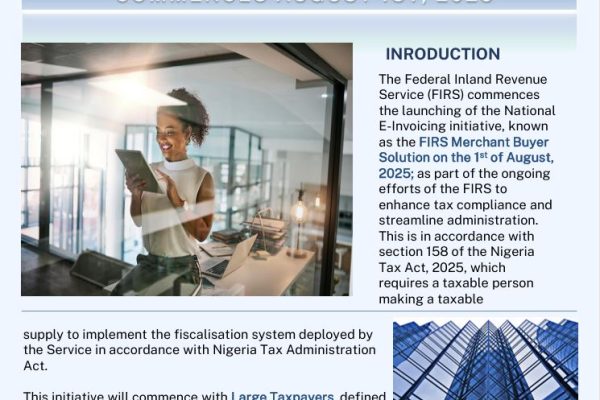The Role of Technology in Modern Tax Management and Planning
The Role of Technology in Modern Tax Management and Planning
In today’s fast-paced digital world, technology is revolutionizing almost every aspect of our lives, and tax management and planning are no exceptions. From sophisticated software that simplifies filing to advanced analytics that aid in strategic planning, technology is reshaping how individuals and businesses approach their tax responsibilities. In this comprehensive guide, we’ll explore how technology is enhancing tax management and planning, and why it’s essential to embrace these innovations for a more efficient and effective tax strategy.
The Evolution of Tax Technology
Historical Context
Traditionally, tax management involved stacks of paperwork, complex calculations, and a lot of manual data entry. Tax professionals and individuals alike faced significant challenges in staying compliant and finding the most tax-efficient strategies. However, the advent of technology has transformed this landscape, making tax management and planning more accessible and less cumbersome.

The Rise of Tax Software
One of the most significant advancements in tax technology is the development of tax software. Modern tax software simplifies the tax filing process by automating calculations, minimizing human error, and guiding users through complex tax laws.
Key Features of Tax Software:
- Automatic Calculations: Tax software can instantly calculate your tax liability and potential refunds, eliminating manual calculations and reducing errors.
- Integrated Deductions and Credits: These programs automatically identify eligible deductions and credits, ensuring you maximize your tax benefits.
- E-filing Capabilities: Directly file your taxes electronically, speeding up processing times and reducing the risk of errors associated with paper filing.
Cloud-Based Solutions for Tax Management
Advantages of Cloud Technology
Cloud-based tax solutions offer several advantages over traditional methods. They provide secure, remote access to your tax data and documents from any device, which is particularly useful for individuals and businesses with multiple locations or remote teams.
Benefits of Cloud-Based Tax Solutions:
- Accessibility: Access your tax information anytime, anywhere, facilitating easier management and updates.
- Collaboration: Share documents and collaborate with tax professionals in real-time, streamlining communication and improving efficiency.
- Data Security: Cloud providers invest heavily in security measures to protect your sensitive tax information from unauthorized access.
Examples of Cloud-Based Tax Tools
Several cloud-based platforms cater to different needs, from individual tax filers to large corporations. Notable examples include:
- TurboTax Online: Popular among individuals for its user-friendly interface and comprehensive features.
- Xero Tax: A robust platform for accountants and tax professionals, offering a suite of tools for tax preparation and compliance.
- QuickBooks Online: While primarily accounting software, it includes features that aid in tax management and planning.
The Role of Artificial Intelligence in Tax Planning
Enhancing Accuracy and Efficiency
Artificial Intelligence (AI) is playing an increasingly important role in tax management and planning. AI-powered tools can analyze large volumes of data quickly and accurately, providing valuable insights and recommendations.
How AI Improves Tax Planning:
- Predictive Analytics: AI algorithms can forecast future tax liabilities based on historical data and current financial trends, allowing for proactive tax planning.
- Anomaly Detection: AI can identify unusual patterns in financial data that may indicate potential issues or opportunities for tax optimization.
- Personalized Recommendations: AI tools can provide tailored advice based on your unique financial situation, helping you make informed decisions.
Examples of AI-Powered Tax Tools
- TaxFyle: An AI-driven tax platform that offers personalized tax advice and automated tax preparation services.
- Xero Tax’s AI Features: Includes predictive analytics and automated insights for better tax planning and decision-making.
Blockchain Technology and Tax Compliance
Ensuring Transparency and Security
Blockchain technology, known for its role in cryptocurrencies, is also making waves in tax management. Its core features—transparency, immutability, and security—are particularly beneficial for tax compliance.
Blockchain Benefits for Tax Management:
- Immutable Records: Transactions recorded on a blockchain cannot be altered, ensuring accurate and verifiable financial records.
- Enhanced Security: Blockchain’s encryption methods protect sensitive tax data from tampering and unauthorized access.
- Improved Transparency: Blockchain provides a clear audit trail, simplifying the process of verifying and validating transactions.
Current and Future Applications
While blockchain adoption in tax management is still in its early stages, some organizations are already exploring its potential. For instance, blockchain-based systems can be used for real-time reporting and automated compliance checks.
Big Data and Tax Insights
Leveraging Data for Strategic Planning
Big Data refers to the massive volume of data generated by businesses and individuals daily. By leveraging Big Data analytics, you can gain deeper insights into your financial situation and make more informed tax decisions.
How Big Data Enhances Tax Planning:
- Trend Analysis: Analyze financial trends to identify opportunities for tax savings or potential liabilities.
- Behavioral Insights: Understand spending patterns and investment behaviors to optimize your tax strategy.
- Scenario Analysis: Evaluate different tax scenarios and their potential impact on your financial situation.
Tools for Big Data Analytics
- Tableau: A powerful data visualization tool that helps in analyzing and presenting complex tax data.
- Microsoft Power BI: Offers interactive dashboards and reporting features to gain insights from financial data.
The Future of Tax Technology
Emerging Trends
As technology continues to evolve, new trends are likely to shape the future of tax management and planning. Some areas to watch include:
- Machine Learning: Further advancements in machine learning will enhance predictive analytics and personalized tax strategies.
- Robotic Process Automation (RPA): RPA can automate repetitive tasks such as data entry and reconciliation, improving efficiency and reducing errors.
- Enhanced Integration: Increased integration between tax software, accounting systems, and financial planning tools will create a more seamless experience.
Preparing for Technological Changes
To stay ahead in the rapidly changing landscape of tax technology, consider:
- Continuous Learning: Stay updated on the latest technological advancements and how they impact tax management.
- Investing in Training: Ensure you and your team are proficient in using new tools and technologies.
- Adapting Strategies: Be flexible and ready to adapt your tax strategies based on emerging technologies and data insights.
The integration of technology into tax management and planning is not just a trend—it’s a transformation that brings numerous benefits. From streamlining processes and enhancing accuracy to providing deeper insights and improving compliance, technology is making tax management more efficient and effective. Embracing these innovations will not only simplify your tax responsibilities but also position you to make more strategic decisions. As technology continues to advance, staying informed and adaptable will be key to optimizing your tax strategy and achieving financial success.











